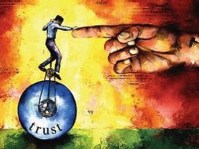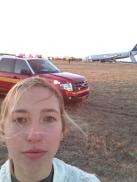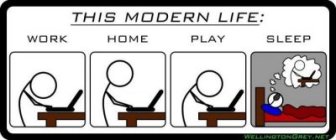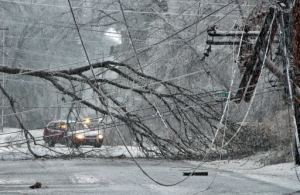5 Tips to be the Super Best Discusser
I spend a lot of time considering what I will say, I speak from inspiration most often, and I get inspired easily and sporadically. This is probably one of the most difficult personality combinations to manage when it comes to having a conversation so on behalf of everyone like me, I’m just going to start off with a big sorry to you!
The problem with this is that while you’re talking to me, you’ve reminded me of the perfect story that you just have to hear. And sometimes, while you’re talking, I’m considering this great new idea that will fix everything you see wrong. Boy oh boy, are YOU going to be sooooooo glad you started talking to me because now I have all kinds of great things to say! 
Well, at least that’s what I use to do. And if I’m being honest, what I still struggle with. Maybe you do too. If that’s the case, here’s a few helpful reminders on how communicate, instead of just talk.
Wait your turn.
Does that seem simple? Good. It’s supposed to be. Anytime I speak with someone and they are talking at about 100 miles a minute, I purposefully limit my input. Some people are exaggerated story tellers, and that gives the rest of us a lot of time to tune out. Because they like providing detail, they’re accustomed to being interrupted, so they’re flying through their thoughts to make sure they get it all out before you or I try to intercede.
Not to mention that every time I am interrupted, the first thing I realize is that whomever is interrupting me wasn’t listening at all, but rather planning their response before I can even lay out the problem. If that annoys you half as much as it does me then you’ll agree how important it is to wait your turn.
Allow space for silence.
If you’re not thinking about your own responses the entire time someone is speaking to you, then there’s inevitably going to be space for silence. Sometimes that space is a moment, sometimes it’s a little longer. Don’t be uncomfortable with pauses, not every break needs to be filled.
Speak strategically.
In many cases, the less you speak, the more people listen. If I save my voice for things that are truly important, I’m taken more seriously and people tend to pay attention when I have input. (Of course this works best if you have something constructive to add, but that’s a different post…)
Create silence on purpose.
In the same regard, the less you speak, the more you will hear. I can’t tell you the number of times I’ve been confused, speechless, or annoyed and allowed a little silence to do my dirty work. When you don’t respond in places people are expecting, they’ll keep talking. Do it again, they’ll keep talking.
You’ll be amazed at what you will uncover. It’s also a fun little trick for those more difficult folks in your life…sometimes your lack of response let’s people run through an entire gamut of emotions and it’s really something quite fascinating to see. It’s almost like watching someone have your argument for you. I highly recommend it.
Let some ideas go.
This is mostly helpful if you’re like me. You may have the most incredible story, example, motto, or meme to share. If it’s not your turn to contribute to the discussion, let it go. Not only in waiting your turn, but in considering abandoning your example altogether.
Maybe it’s important enough to come back to, but often times it’s perfect in that moment and when that moment passes and the discussion progresses, your inability to move forward past that one “great thing” will leave you wallowing in a moment of discussion that’s completely over, and you’ll have missed most things since. Let it go so you can actively hear what someone is telling you and know that there will be plenty more perfect interjections to go around.
Remember, your chance to shine isn’t in the moments you have the best zinger or illustration; they’re in the moments your relevant thoughts are heard.
Preparedness sounds like momsense…
I can’t apologize for my pitiful puns. Or won’t…maybe it’s won’t?
This month I’ll be joining other preparedness-minded moms in discussing some of the most important topics America’s PrepareAthon has to share. While I was preparing my little section of slides (chatting about communication, surprise surprise!) I really had to take a minute to wonder, what do other moms need to hear that makes them truly take a step in preparing their family? Better yet, how can those steps be as feasible as possible?
If you work in preparedness and connect to the community at any point, I’m sure you’ve wondered this yourself. Let me share with folks what doesn’t work. Moms, dads, family members, feel free to chime in in the comments section.
This Doesn’t Work
- Acronyms
- Bestowing ALL of the information you know upon others
- Anything where you mention a directive, presidential and otherwise
- 10,000-foot-tall fear tactics
- Information that requires training to understand
These things don’t work because they don’t matter to anyone outside of the field. If you’re not in the preparedness business, all you need to know is what will keep you and your family safe, and the time and financial cost of it. Nobody disagrees they’d like to be prepared during an emergency or disaster, but if we’re all going to live like “that will never happen here”, we have to know that preparing for it is worth the effort.
This Does Work
- Reasons that what you’re saying is important
- Free things
- Easy things
- Plans that also improve daily life
- Simple, relatable language
- Realistic examples
- Understanding who you’re talking to
Some of us enjoy a family game night, movie night, standing dinner, Sunday drive. My family and I enjoy lots of those things, but we also enjoy family preparedness. I know, it sounds like I made that up just so you’d listen to my blog and trust my opinion. But hearing my kids process what they think is safe and smart, giving me their feedback on where our family meeting spot should be if we have a house fire, taking a few moments in the car during a bad storm to talk about sheltering, or teaching them a song that helps them remember my phone number – these are things that bring us really close together. I continue to be amazed by the way they see the world and in turn, I don’t fear their safety the way I would if I sent them out in to it completely unprepared.
So fellow emergency management folks, let’s communicate with the community the way they need to hear it, not the way we want to say it.
Fellow moms (and family members, et al), bare with us while we share something that is desperately important to us, to help us all reach our goal of keeping our families safe. After all, it takes a village…
If you’ll be joining me on this webinar, I’ll have 7-10 minutes of solid reasons why you need a communications plan, how to create one and how to make it successful. Don’t wait! Register for the webinar!
What an EM Needs to Know During Ebola
Ebola. Are you tired of hearing about it yet? Not that it isn’t a notable virus that deserves our attention and our preparations, but as emergency managers, our job right now is not to eliminate the threat. Our job right now has very little to do with the actual virus itself. Allow me to make a case for you.
This blog just got serious…
Ebola is a virus that is spread through contact of the bodily fluids of an infected person. It’s not in the air and to get it, you’d have to have a direct exposure that allowed for entry into your own body. Once you’ve got it, yeah, that’s a problem. But in many places, especially the US, actually catching the disease? That is not going to be easy.
Lots of viruses are spread this way and our hospital systems are not only prepared, trained and ready for what’s already here, they’re prepared for what’s coming. Personal protective equipment exists to build a barrier between our healthcare workers and those who require their services. Processes and procedures have been in place to handle the worst of the worst for years on years. So, why then all the fuss, and what are emergency managers actually supposed to be doing with this?
We already know that people fear what they don’t know, and that there are so many unanswered questions about the disease itself is the worst kind of unknown. Where does it originate? Can it mutate? Why isn’t there a cure? I get it – I find these questions intriguing myself!
Right now, however, our job isn’t to answer these questions. Our job lies in the public panic. I would estimate that is roughly 85% of our responsibility since the beginning of disease spread. Of course there is training, drills, exercises and inter-agency communication to be done, but the major focus simply must be on communicating clearly with the public. Most essentially on a local level. Why? Because the public has a disconnect in personal trust on a federal level.
And why shouldn’t they? They don’t “know” federal departments. Federal agencies aren’t first responders, and they’re more often than not separated from the local message and response. They have a huge task before them (i.e answering those questions above that we aren’t challenged to solve), but they won’t be able to truly touch public panic and public perception.
As emergency managers, it isn’t our job to answer the questions of the specialty agencies we support. What we need to focus on is developing a consistent, calming, accurate message from our partner agencies to our community members, because their perceptions and their unnecessary panic is the emergency right now.
Those plans you’ve worked so diligently on? People need to know they exist. Those exercises you participate in? People need to know that they happened. We can’t answer the questions that make people so afraid, but we can keep fear from turning into panic by showing all of the ways we have always been prepared and we will continue to be prepared. Our community members need to hear from us that we have a plan, that they can trust we know what we’re doing. And we need to be trusted enough to explain how these scary things work, and what we’ll do about it.
It won’t be enough to go out and tell everyone they have nothing to worry about. Let’s face it, that message ain’t gonna cut it! It’s okay to allow our community members to feel something. But when was the last time a scare tactic changed anything about anyone’s actual preparedness status? Go ahead, I’ll give you some time to think about it…
Scare tactics don’t work. We need to communicate all of this, take away the element of panic, and turn relevant concern into beneficial action.
Explaining what we do, having a consistent presence, facilitating that message and then showing people that just as we have prepared ourselves for the worst of the worst, so too can they prepare, is where the success is. Our plans don’t fall to the wayside because they’re flexible enough to fit the different disasters we face. Our plans, kits and equipment are adaptable. Anyone’s can be, if they know where to start.
Here’s the catch…it really only works if your community has faith in your message.
Do you exist outside of the walls of your office? Does your agency know you, does your community know you? Are you equipped to lead the message our public needs to hear, or will you be out of touch? And, for those of you who dread the role of the public information officer, that doesn’t mean being the man or woman on camera. That means being a part of the development of the message and being a trusted source people can turn to in order to successfully receive it.
What have you done to create a trustworthy atmosphere in your community in advance of times like these where our success relies so heavily on our ability to share critical information? Are you prepared for what happens if the community doesn’t hear us and panic does ensue?
Right now is the right time to get ahead of your message, and if you already are, it’s a great time to tell someone else how you’re nailing it.
Go ahead. I’ll wait.
Public Health, Preparedness, Social Media and…STI’s?
I know I’m all about some emergency management, but by nature of my job I’m also closely associated to public health. And on top of that, I think everyone reading my blog knows how much I try to utilize the power of social media (see: Loyals, LLC – coming soon to a blog near you!) So pardon me while I put these topics together and tie it all into zombie preparedness, won’t you?
Last weekend, an article came out in one of our big local newspapers. It recapped the statistics regarding STI/STD rates within the City of Roanoke, which is one of the largest cities in southwest Virginia and a big part of my health districts I support through the Medical Reserve Corps. The results were…not awesome.

Omg….she is NOT writing about this! – Your Teenagers
I won’t go into a lot of the statistics (mostly because it’s all in the article and I have other stuff to say!), but I will say that in the area for young people ages 15-24 (especially teens), sexually transmitted infections like chlamydia and gonorrhea are up to twice as high as the rest of the state, and fourth in the state compared to other areas. In southwest Virginia?! Lots of teens are getting busy and few of them are finding out what their statuses are. This is not okay.
So what is promoting this behavior, how are we going to change the rate, and how am I actually going to tie this to zombies? I’m glad you asked!
Now if you know me you will also know that I am NOT a public health guru. I care, but I am an interested citizen and am not at all clinical. That being said, I think it will be important for the public health folks I support to consider the impact that social media is having on these teens who are being exposed. Sure, there is always going to be face-to-face communication, persuasion, teen dating and hook ups and so forth. But now, with apps like Tinder and Hot or Not, teens are focusing solely on communicating through physical appearance and then connecting based on that alone.
Not familiar with these apps? Allow me to give you the ultra brief overview! Tinder is an app you leave on on your phone that alerts you when someone within a close (I believe no further than 60 miles or near that) radius “likes” you based on your picture. You create matches and are able to chat with folks who are near to you…making those very dangerously-charged teen conversations extremely easy to act on. Hot or Not is similar in the way you literally scroll through folks rating their appearance and when you are attracted to each other, you are connected to chat. Are there other uses for some of these apps? Absolutely! Are teens looking for a local friend who also enjoys bird watching and photography? Highly doubtful.
The point of all of this is to highlight that social media has the power to be part of a problem. A health problem at that, and as we all know, unhealthy communities are not resilient communities. And every disaster has a health component. This is a situation where the health component IS the disaster, but what we also need to realize is that social media can also be part of the solution if used properly…
If your audience is teens and you want them to be prepared, how are you going to communicate with them? Consider the fact they don’t want to be embarrassed, might be in denial things can happen to them, and generally don’t seek out information on their own because they don’t know how and they don’t want their parents/friends/peers to know. Consider the fact they’re already on social media, which is generally a private place to toss in snippets of information. If I want to prepare a teen for anything, I’m going to jump in on apps like Vine, Twitter (and creatively, I’d accept the challenge to use things like Tinder and Hot or Not…) to give them a place to anonymously stumble upon and/or seek out the information they need to know about things like safety, how and where to obtain testing or free supplies and resources, what the rates are and what it means for them.
Imagine if the zombie apocalypse was spread like an STI. Does that make you at all more interested in this topic? You have a deadly disease scouring through your town. It starts with teens. It’s antibiotic resistant. It’s taking lives. If you’re supporting your public health folks, or if you are public health already, and you’re already learning how to connect with a specific audience about a specific topic, they’ll not only know how to find you when/if things become terribly worse…they’ll trust you with the information that is most important to their health and safety.
If you’re wondering what else I’m thinking – setups about STI’s and zombies so teens can approach something that potentially makes them uncomfortable or relate to something they’d otherwise ignore, create six second PSA’s with awareness and testing info on Vine in popular hashtags, target local teen topics on Twitter…and whatever else comes to mind that the powers that be will let me do. And seeing how I don’t have all of the extra hours, or knowledge for that matter, I’ll probably engage my volunteers who are submitting their interest in supporting this outreach as we speak. Errr….as I write. And you read….
Preparedness is for all types of disasters, and there are a million ways to practice it. Go out and play with your public health friends today and see what other ways you’ll be intersecting in the future. Bring along some volunteers who may or may not be smarter than you…and then maybe tweet about how you did it?
January Disaster in Place: Power Outage!
Time for another round of Disaster in Place! Please feel free to change and tailor to your needs or the needs of your organization and send me a note to let me know if you are using/participating!
If you haven’t participated before, Disaster in Place is a short 5-10 minute exercise designed to help individuals think about their own personal preparedness with a different scenario every month. There is also additional training, videos, and relevant material for those who want to further their involvement. I use it to engage my Medical Reserve Corps members and put up generic versions here for anyone else to use. Enjoy!
***
Hello and welcome to the first “Disaster in Place” of 2014!
This month’s scenario is a widespread power outage.
If the power went out across your area right now, what would you do? How would you receive updated information about the outage? Do you have a weather radio, batteries, crank lights, and food and heat options that do not require electricity? Do you fill your gas tank, charge your cell phone and keep cash handy when inclement weather is possible as these things all require electricity to operate? Do you know how to properly operate a generator and protect yourself from electrical hazards?
For everything related to blackout and power outage preparedness, review these helpful FEMA tips, guides, and reminders: http://www.ready.gov/blackouts
For tips on Food Safety During Power Outages, check out this short FDA video: http://www.drc-group.com/project/jitt-poweroutage-foodsafety.html (duration 2:46)
For tips on Downed Electrical Line Safety, watch this short clip the State of Washington: http://www.drc-group.com/project/jitt-powerline.html (duration 1:25)
For information on personally preparing for this, and all types of disaster, take this free FEMA training, IS-22 Personal Preparedness: http://training.fema.gov/EMIWeb/IS/courseOverview.aspx?code=IS-22
We’ve already had some record breaking cold weather, and the winter is still young! Please, please stay prepared!
Tanya
November Disaster in Place – Winter Storms!
It’s time for a new “Disaster in Place”. Take 5-10 minutes to play along!
This month’s scenario is just in time…winter storms.
If severe winter weather were to affect your area right now, what would you do? Could you safely shelter in place at work or at home through the next few nights? What if you lost power and needed to find creative ways to stay warm and cook food, how would you do it? What if…you were stranded in your car for hours in the cold, do you have what you need to stay warm and safe already in there?
For information about prepping your home, car, and mind for severe cold and winter storms, check out this FEMA site and “Pledge to Prepare”: http://www.ready.gov/winter-weather
For a few tips about what to do if winter weather strands you in your car, check out this short (1:46) video: http://www.youtube.com/watch?v=cR9sJKdsY4o
For tips about cooking food, as well as some great non-perishable recipes for your kit, check out: http://www.emergencykitcookoff.org/
All signs point to a busy winter for Virginia…please be prepared!
Tanya
October Disaster in Place: Rad/Nuc Event!
Happy October! Please take 10 minutes to enjoy this month’s Disaster in Place and as always, please feel free to share with your partners and peers. If you do, send me a message or leave a comment and let me know who’s joining in!
Also, for the fellow emergency leaders distributing this in your areas, here is the link to the Radiological Terrorism Toolkit referenced below where you can print, download or order a full kit of your own for no charge (and I strongly encourage this for you, your peeps, and your partners!)
It’s that time again!
Welcome to the October Disaster in Place!
This month’s scenario is a radiological/nuclear terrorism event.
If a radiological/nuclear event were to happen in your area right now, how would you protect yourself? Are you familiar with your local evacuation routes? What if it happened in Washington, DC (or your nearest well-populated city?)…could you support our closest state managed shelter and leave your family for 1-3 days without worrying about them, and are you affiliated with an agency that allows you to do so? What if you were told to shelter in place for the next two weeks?
For all kinds of information about being involved in a radiological/nuclear event, check out these resources from the CDC, including protection, treatment and health effects: http://emergency.cdc.gov/radiation/
For training on responding to a radiological/nuclear event, check out the free online course from Johns Hopkins Bloomberg School of Public Health – Radiation Terror 101: http://www.jhsph.edu/research/centers-and-institutes/johns-hopkins-center-for-public-health-preparedness/training/online/rad101.html
You can also email me if interested in learning more about our cache of Radiological Terrorism kits, full of information for public health professionals and clinicians, available free from the CDC.
See you next month! Tanya
September Disaster in Place: Zombie Apocalypse!
Hello and happy National Preparedness Month!
This month’s scenario is a zombie apocalypse.
If zombies were to emerge from the undead right now, would you be ready? Could you defend yourself using what is right beside you? Do you and your family members have a meeting place? Supplies to keep you alive and safe for at least three days until some of this can be sorted out? What are your emergency exits if a zombie comes walking through the door? Do you have a written response plan? (All assumptions are based on slow, rather than fast moving, zombies).
For information about zombies and how to prepare for this catastrophic apocalypse, visit the CDC’s excellent resource: http://blogs.cdc.gov/publichealthmatters/2011/05/preparedness-101-zombie-apocalypse/
For additional training on personal preparedness, and to see tips for making your own zombie kit, check out this fun video: http://www.youtube.com/watch?v=MXFdT0V770w
And for FEMA tips on your personal anytime preparedness, check out IS-22: Are you ready? http://training.fema.gov/EMIWeb/IS/courseOverview.aspx?code=is-22
Let’s get ready!
Tanya









